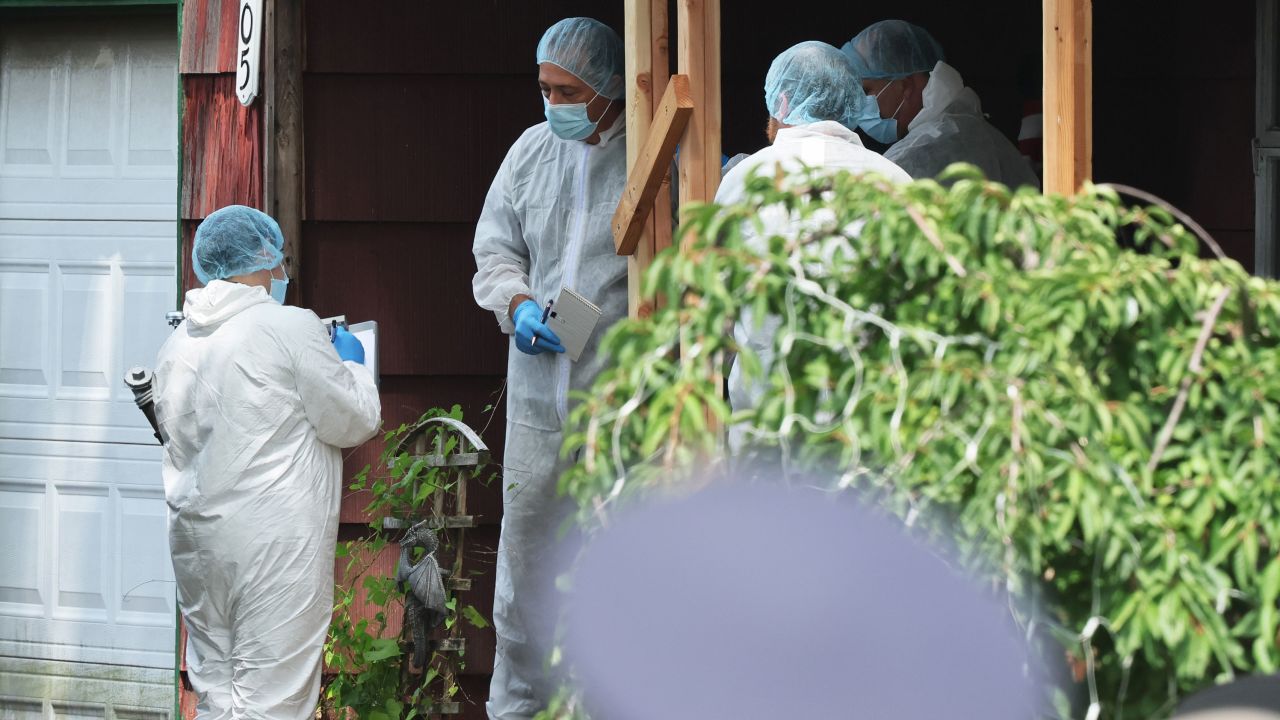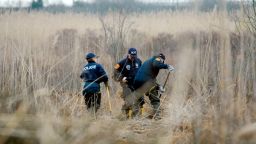Gilgo Beach killings suspect Rex Heuermann appeared in a New York court on Wednesday for a short status hearing on his upcoming trial for the murders of three women whose bodies were found more than a decade ago.
Heuermann, a 59-year-old architectural consultant from Massapequa Park, wore a suit jacket and khaki cargo pants and was handcuffed behind his back.
Asked by the judge if he’d been able to review case evidence in his cell, Heuermann said yes, and that he’d been averaging “two to three” hours of reviewing. That was the only time he spoke. He stood throughout the hearing.
When Heuermann left the courtroom, he turned and looked at the gallery, and appeared to have a small smile on his face before he walked out.

The case stems from the discovery of nearly a dozen sets of human remains along Long Island’s South Shore between 2010 and 2011. Four of the victims were found buried near each other off Ocean Parkway in Gilgo Beach, and they were dubbed the “Gilgo Four.”
Several of the women were identified as local sex workers, and the long unsolved case raised questions as to how seriously law enforcement treated their disappearances.
Heuermann was arrested in July and has pleaded not guilty to three counts of first-degree murder for the deaths of Melissa Barthelemy in 2009 and Megan Waterman and Amber Costello in 2010, according to Suffolk County prosecutors. He is also the prime suspect in the 2007 disappearance and death of the fourth Gilgo Beach victim, Maureen Brainard-Barnes, authorities have said.
In court, prosecutors said they gave Heuermann’s legal team over 10 terabytes of information to review in August, including subpoenas and court records totaling roughly 8,000 pages. Prosecutors gave additional evidence Wednesday, including about 5,000 pages of evidence related to two victims, the grand jury testimony, police memo books from the search of his home and video surveillance.
Prosecutors will continue to provide discovery on a rolling basis ahead of the next court date on November 15, Suffolk County District Attorney Ray Tierney said.
Speaking outside court, Tierney described the hearing as “typical,” dealing with logistics and discovery. “It’s not exciting, but it’s necessary,” he said.
Heuermann’s attorney Michael Brown said there was still a lot of discovery that the defense has not received, including any DNA evidence.
Brown said he had advised Heuermann to be stoic and not show emotion. The attorney added that Heuermann has been an “active participant” in the case and “is doing the best he can.”
“He’s a fellow who was working, has never been arrested, has a wife and children, is a productive member of society and, obviously, the district attorney and the government is making these allegations and they’re horrific,” Brown said. “He’s not guilty of this. Now, he has to sit in custody, be away from his family, be away from his wife and kids, not work, not produce for his family and support them and sit in a jail cell until this case comes to fruition.”
DNA swab matches pizza box DNA, prosecutors say
Part of Wednesday’s hearing focused on the DNA evidence in the case and previewed some of the defense’s challenges to that evidence.
In early 2022, a multiagency task force was formed to re-investigate the cold case, and Heuermann was soon identified as a potential suspect.
A major break in the investigation came this January, when investigators recovered Heuermann’s DNA from pizza crust that was thrown away in a Manhattan trash can, authorities said. That pizza box DNA was then compared with DNA from a male hair from the bottom of a burlap sack that the killer used to wrap one of the victim’s bodies, according to prosecutors.
Using mitochondrial DNA testing, the male hair would exclude 99.96% of the North American population, but Heuermann was notably not excluded, according to the prosecution’s bail application.
In court Wednesday, prosecutors said they had since taken a buccal swab of Heuermann, and the swab DNA matched the pizza box DNA. “The buccal swab erases all doubt,” Tierney said.
But in what may be a preview of the defense’s argument, Brown outside court noted that the mitochondrial DNA technology connecting Heuermann to the male hair is not as precise as standard nuclear DNA.
Instead, mitochondrial DNA “refers not to an individual, but a group of individuals in the same maternal lineage,” according to a 2021 overview of the technology published in the journal Emerging Topics in Life Sciences.
“It’s still a significant amount of people that could be the source of this hair,” Brown said.
CNN’s Steve Almasy and Jean Casarez contributed to this report.








